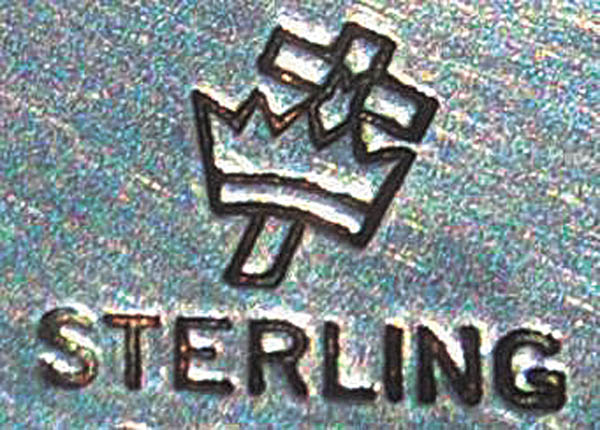Where Did The Term "Sterling" Originate?
“What’s It Worth” Antiques Minute
It is said that King John of England (1106-1216) was the first British monarch to recognize the need for his country to adopt some form of silver standard. At this time, there were no banks, paper money, stocks, bonds, money market funds, or wealth managers. Most of what individuals owned was in the form of personal property, and silver was often the most obvious display of wealth. To protect the average Englishman from fraud, and to add confidence to the English silver system, King John moved towards adopting a silver standard.
The king hired select silversmiths from Germany to travel to England and assist English silversmiths in refining silver into the most appropriate fineness. Pure .999 silver was too soft and malleable, so copper or other metals were added to strengthen it. But too much copper darkened the silver, and the value was correspondingly reduced, while too little copper left the silver too soft and malleable. After considerable testing and research, it was decided that Englands silver standard should be a mixture of 92.5 percent silver and 7.5 percent copper or other base metal. And this has remained the English silver standard, with a few brief exceptions, since the 12th century. Even today, Sterling silver must be 92.5 percent pure silver and 7.5 percent base metal.
While the German silversmiths were in England, they were often referred to as easterlings because Germany was east of England. Over time, easterlings evolved to esterlings. And as time went on, the first two letters were eventually dropped, and the English silver standard became known as sterling, and the term remains today.
Whats it worth? We love sterling silver. If you drop and shatter a glass, you have absolutely zero value. If you run over your sterling with a steam roller, you still have the scrap silver value. What other items can still have value after being totally destroyed. And with silver currently between $15-$16 per troy ounce and gold between $1,250-$1,350 per troy ounce, sterling silver is much more affordable than gold for the average person.
Mike Ivankovich is an auctioneer, appraiser, home downsizing expert, and host of the "What's It Worth? Ask Mike the Appraiser" radio show. Now in its fifth year, Whats It Worth airs live on Friday mornings from 9:30 to 10:30 a.m. on WBCB 1490 AM in the greater Philadelphia area. It is available on the internet at wwWBCB1490.com.
Listeners can also visit his radio show website at www.AskMikeTheAppraiser.com. To contact Mike Ivankovich, call 215-264-4304.






